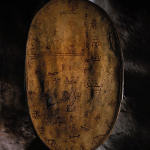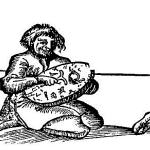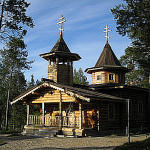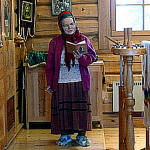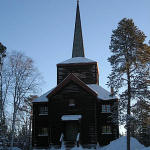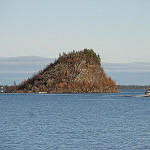

Home
Area
Vätsäri
Övre Pasvik
Pasvik Zapovednik
Nature
Geology
Climate
Water system
Flora
Fauna
Culture
Population
Religion
Sources of livelihood
Old ways of life
Time of industrialism
History
Stone Age
Early Metal Age
Late Metal Age
Middle Ages
Towards modern times
Timeline
Cooperation
Nature monitoring
Nature tourism
Publications
Contacts
Visit Pasvik-Inari
Guidelines
Regulations
News
Links
Religion
Old shamanistic religion
The Sámi religion was a holistic way of life which was closely connected to nature and culture. Nature was full of spirits and holy places such as fells, springs and stones. Natural forces, the thunder, sun, wind and water were worshipped. For example for the Inari Sámi the most powerful god was the male god of thunder, called Ukko (Äijjih). Ukko's wife was Akka, the goddess of fertility and she represented the female side of nature.
A seita was usually a stone or boulder which stood out clearly from its surroundings. Sometimes a seita's stones were piled by humans or it was made from wood. These demanding gods were divided into fish and deer seitas, and worshipped to ensure catch or hunt.
In Sámi society the shamans (noaidi) were the most important members, who had extraordinary powers. In cases of emergency the shamans made contact with spirits of nature, and to the other side. They also took care of the society's daily life, predicted the future, confirmed catching and hunting luck and healed sick ones.
The oldest literary documents describing the old shamanistic religion were written by Swedish missionaries. Through conversion to Christianity from the 16th century onwards, the manifestations of old religion such as shaman drums and holy places have been destroyed.
Symbols of power
The churches were visible symbols of power. Norway started to build churches along its west coast during the 14th century. The first Catholic church was built at Vardř already in 1307. By the 16th century, Denmark-Norway had built 6 churches in Eastern Ruija. The empire of Russia responded to this western expansion by building Orthodox churches and monasteries in the Kuola area, at Neiden, at Pasvik River (Paatsjoki) and at Pechenga.
The actual mission work in Lapland began during the 16th century, when the Swedish missionaries travelled around winter villages of Lapland. By the beginning of the 17th century, almost all Sámi were baptised into Christianity, and the first church of Inari was built in 1648. However, many Sámi retained their old pagan religion along with the new religion for a couple of centuries.
Coexistence of two religions
Lutheran religion is prevailing in Finland and in Norway, but there are also Orthodox believers, especially among the Skolt Sámi. In Finland, the Orthodox Church is a recognised state church. The spiritual centre of the Orthodox Church in Russian Lapland until the Russian revolution in 1917 was the monastery of Pechenga. After the closing of this monastery, the most western Orthodox chapel of Skolt Sámi was the tsasouna of St. Gregorius in Neiden by the River Munkelva (Monk River). The old cemetery exists still in Svanvik.
In the 20th century, chapels and churches were also erected in Finland. There are two beautiful Orthodox churches and cemeteries in Finnish Lapland, one in Sevettijärvi and another in Nellim. In Russia after the revolution in 1917 the Orthodox Church faced destruction. Many churches were actually destroyed or their function was changed. Only since the 1980s has the Orthodox church become stronger again in the area.
